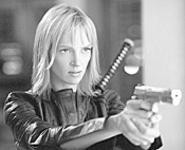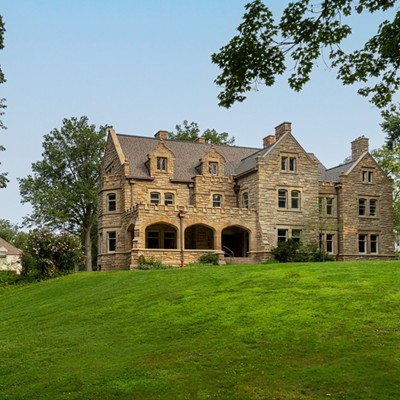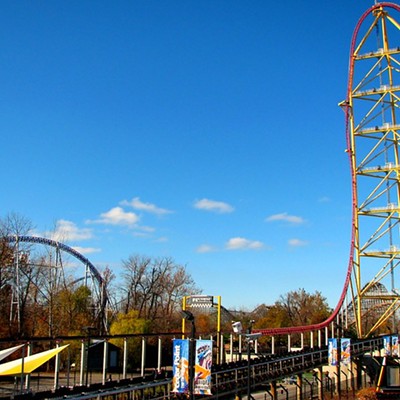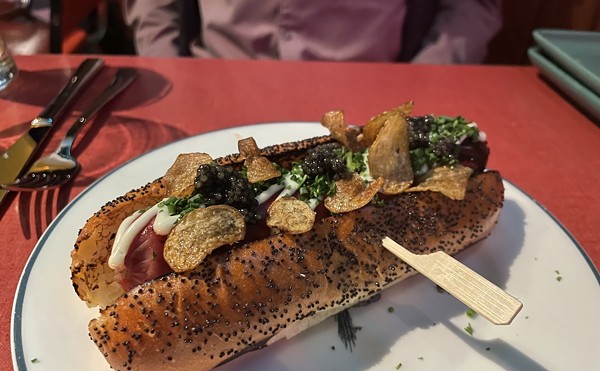Would Kill Bill have been better as one movie? It certainly would have been a longer one. Vol. 2 alone, with its scenes of endless chitchat between Thurman and Carradine and Thurman and Madsen and Madsen and Hannah, feels bottomless all by its lonesome, even before you get to the two rounds of end credits. The first one, with its protracted fight sequences and gallons of gore, was exhausting; its successor, in which everyone left alive explains what happened to the intended and actually dead, is exhaustive. Together, they could make you a little groggy.
But they need each other to survive, like the two Captain Kirks in that Star Trek episode where the transporter splits him in half. One Kirk is soft and incapable of commanding; the other lusts for blood and is incapable of rational thought. Separated, they're useless; united, they're the best commanding officer in Starfleet. (Lest you think this comparison a bit, oh, geeky, consider that Tarantino credits the epigram for both Kill Bills -- "Revenge is a dish best served cold" -- to an "old Klingon proverb" from Star Trek II: The Wrath of Khan. Then, what are Tarantino movies, if not geek pornography?) The first Kill Bill was nothing but violence -- swordfight upon swordfight, till the clanking of steel blades drowned out anything anyone said. The second is its emotional counterpart, the heart without all the blood drained from it and poured onto the floor for you to step and slip in.
The opening scene, set at the El Paso chapel where The Bride and her wedding party were massacred by Bill and his Deadly Viper Assassination Squad, sets the tone. We see, in black-and-white flashback, the events that set the movie(s) in motion: The Bride and her husband-to-be (Chris Nelson) and their small group of friends are chatting with the minister (Bo Svenson, speaking of flashbacks) about the next day's ceremony. Sam Jackson is there, too, behind the piano; it's a nifty cameo, since it was Jackson who made reference to Carradine's Kung Fu Caine in Pulp Fiction. Then Bill shows up to confront The Bride about her decision to leave him and a life of death for a gig in a used-record store, and during their brief, tender tête-à-tête you feel their history together. Their small talk has big consequences, not least because you know what's about to happen -- he's going to shoot her in the head -- and the conversation has the tension of a confrontation. Tarantino, bless him, has enough restraint to pull out of the chapel before the shooting starts; he's less concerned with the carnage than the aftermath, for a change.
Then we meet Budd, who is Bill's brother and a man very much resigned to his fate: "That woman deserves her revenge," he says to Bill, "and we deserve to die." Budd's probably the most complex character in the two films: an assassin working as a bouncer at a topless bar, who will take shit from the owner and even clean it up when it spills out of an overflowing toilet. But he does not go quietly; neither does Hannah's eye-patched Elle, with whom Thurman crosses swords in a scene reminiscent of the Winnebago fight sequence from Raising Arizona.
Then we're left only with Bill and The Bride, for whom love and hate have become the same thing. Carradine, portraying Bill as a calm and charming killer, could just as easily kiss this woman as kill her; perhaps theirs will end up as an inevitable union, bound by the daughter he's raised in The Bride's absence. Or perhaps not. Carradine, heard but not seen in the first movie, gives Kill Bill Vol. 2 a warmth and dignity its predecessor lacked; we come to understand his motives as well as we comprehend The Bride's. Their destinies are intertwined, as are these two movies that can't exist without each other and shouldn't have had to.










